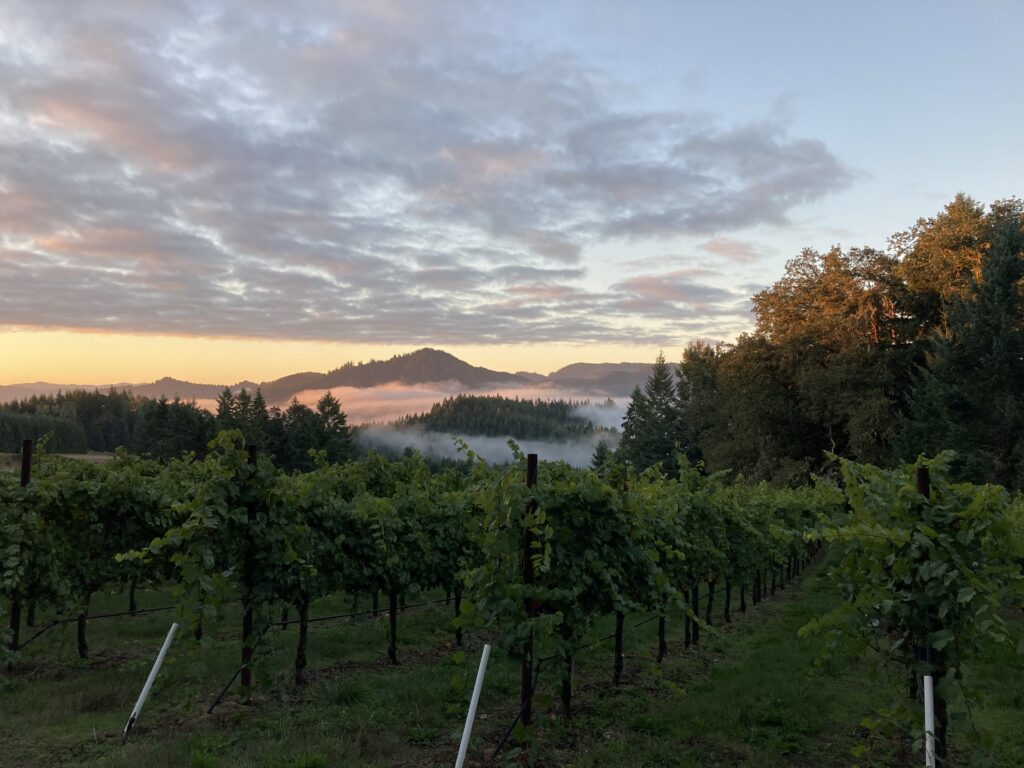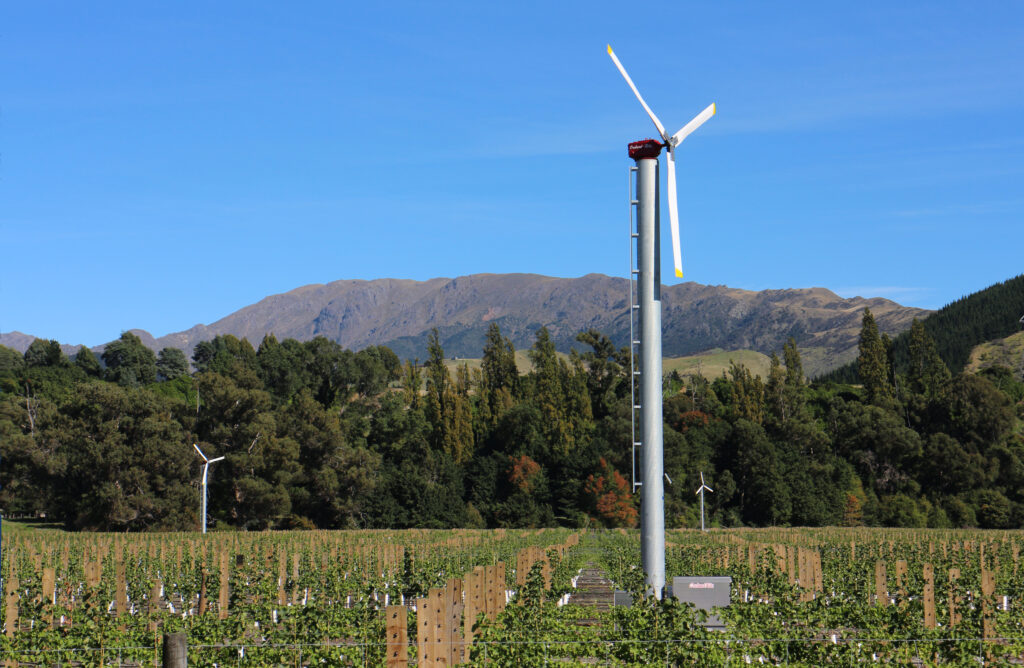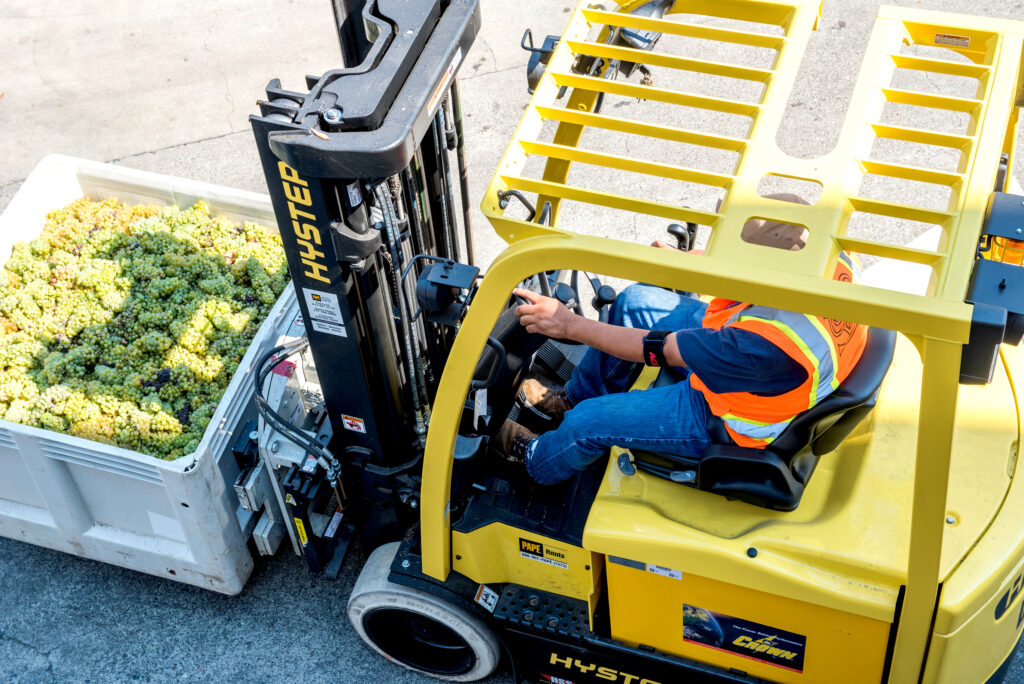
By: Becky Garrison
The Southern Oregon AVA, established in 2005, consists of five distinct regions: Rogue Valley AVA, Applegate Valley AVA, Umpqua Valley AVA, Red Hill Douglas County AVA and Elkton Oregon AVA. Multiple rivers – Umpqua, Applegate, Illinois and Rogue – traverse throughout this region, thus creating a number of small valleys and hillsides and a range of mesoclimates. This region’s latitude, climate and rich terroir with elevations from 350 to 2,000 feet, average precipitation of 19 inches annually and approximately 175 frost-free days afford winemakers with a European-like growing season.
Even though Hillcrest Vineyard in the Umpqua Valley was the first vineyard to plant pinot noir grapes in Oregon in 1961 commercially, Willamette Valley’s pinot noirs tend to dominate the Oregon wine scene, thus overlooking the 70 different wine varietals produced in Southern Oregon. This includes grapes unique to the Pacific Northwest.
For example, in 1997, Earl and Hilda Jones of Abacela Winery in Roseburg were the first in the Northwest to grow and vinify the tempranillo grapes commercially. This was followed by Stephen and Gloria Reustle of Reustle Prayer Rock Vineyard in the Umpqua Valley, who planted the first grüner veltliner wine made in North America in 2003 to 2005. Also in the Umpqua Valley, Girardet Vineyards & Winery in Roseburg was the first to plant baco noir grapes in Oregon and produce a baco noir wine in 1971. Other varieties grown in Southern Oregon that are not widely grown elsewhere in the Northwest include albariño, dolcetto, grenache, malbec, and petit verdot.
According to Nichole Schulte, head winemaker and an owner of Barrel 42, a full-service custom crush winery in Jacksonville, very favorable Oregon laws allow for winemakers to be creative and have a little bit more control over the grapes that come into the winery. These laws allow for more flexibility in blending non-pinot noir wines such as the GSM (grenache syrah mouvedre) blends that originated in the Rhone region of France, as well as other blends that are not as well known.
“These wines require a bit more storytelling behind them,” Schulte said. “This is where our friendly tasting rooms and winemakers come in because they can explain what they’re doing and the intention behind that particular wine.”
While most wine regions focus on either warm or cool climate grapes, Southern Oregon can grow both warm (tempranillo, cabernet sauvignon, malbec, syrah) and cool (pinot noir, pinot gris, riesling) climate grape varieties grow very well due to the many and diverse microclimates, vineyard elevations and terroir differences across the region.
According to Rob Folin of Ryan Rose Wines in Medford, “These cooler nights and hotter days are awesome for the grapes, allowing the grapes to ripen over a longer growing season with greater concentration and balanced acid levels.” He added that they “seldom get spring frosts and only the occasional fall frost.”
A key difference between the two regions is that the Umpqua Valley relies on the ocean for its diurnal swings (warm days and cool evenings to help preserve acidity in the grapes), whereas the Rogue Valley relies on elevation for its diurnal swings. Ross Allen, president of the Rogue Valley Vintners and owner and vineyard manager at Padigan Wine in Medford, points to a few examples of how the climate and climate suitability in the Rogue Valley makes them unique as a key factor to the quality of fruit they produce.
“The Rogue Valley’s precipitation is less than the Willamette Valley and more similar to Napa, making for lower disease pressure and cleaner fruit,” Allen said. “In addition, the Rogue Valley’s growing season temperatures and heat accumulation clearly distinguish us from the Willamette and California. Also, the Rogue Valley has one of the widest diurnal temperature swings of any wine region worldwide, enabling greater potential flavor and aroma development.”
Family-owned, multigenerational vineyards dominate the landscape, with the winemakers often pouring the wine in their tasting rooms while sharing their vast knowledge of viticulture with visitors. Eric Weisinger, owner and winemaker at Weisinger Family Winery in Ashland, points to the camaraderie within fellow Southern Oregon winemakers that creates a healthy culture.
“People want each other to succeed,” Weisinger said. “Our region may not be that old but we’ve done a lot in a short period of time.”
The towns that dot Southern Oregon, such as Ashland, Grants Pass, Jacksonville, Medford and Roseburg, have emerged in recent years as wine destinations with food, art, music and a wide range of lodging options from budget motels to B&Bs nestled within a vineyard estate. Unlike more populated Western wine regions such as the Willamette Valley or Napa Valley, Southern Oregon is far away from major population centers, so one can avoid the touristy crowds that tend to congregate, especially during the weekends and holidays. While this intimacy creates a unique wine experience for the consumer, Ted Gerber of Foris Vineyards in Cave Junction notes how this region’s distance from major populations can make direct-to-consumer (DTC) sales difficult. However, some wineries, like the Weisinger Family Winery, sell almost all of their wine in the tasting room or online.
Rogue Valley AVA
This AVA is dominated by the Rogue River that flows south into the AVA at the town of Shady Cove, turns west outside of Eagle Point and flows through Gold Hill and out of the AVA northeast of Grants Pass. This region is home to Oregon’s first official winery, founded by Peter Britt in 1873. Currently, the Rogue Valley’s approximately 180 vineyards run along three valleys of this river’s tributaries: the Illinois, Applegate and Bear Creek. While this valley’s heat results in prime growing territory that naturally benefits big Bordeaux and Rhône varieties, winemakers like Jean-Michel Jussiaume of Maison Jussiaume Wines find this climate well-suited for producing sparkling wine. He moved to the United States from France in 2005 with the intent of producing handcrafted sparkling wines. In his estimation, the growing conditions of the Rogue Valley are less challenging than the region of Muscadet, where he grew up.
The Illinois Valley, the southernmost part of this AVA, receives some marine influence due to its proximity to the coast, thus resulting in a cooler, wetter climate than much of the rest of the appellation. This climate attracts vintners like Ted Gerber, who established the family-owned Foris Vineyards in 1974 with his late wife, Meri. He chose Cave Junction as the location for his winery, as it lies halfway between the pinot noir growing areas of Sonoma and the Willamette Valley. Also, this region has a very large diurnal swing with plenty of ripening for alsatian varieties. In 1977, he had the distinction of being one of six growers to receive a few dozen clones of pinot gris, pinot blanc and gewürztraminer that Oregon State University imported from France, and Floris continues to produce these varieties.
Like many other winegrowers in the Rogue Valley, Chad Day, owner and manager of RoxyAnn Winery in Medford, came from an agricultural tradition where he describes his winemaking process as farm-to-fork. Currently, Day oversees farming the vineyard and managing the winery while a cousin manages the orchards and field crops, all farmed on the same 250 acres their extended family has owned since the 1890s. While they grow 17 different varietals, their focus is on the Bordeaux and Rhône varieties that grow well in this warm region with their craft claret blend consisting of cabernet sauvignon, cabernet franc merlot, malbec and petit verdot. At this juncture, climate change has proven beneficial for them as the green cabernet that came from the Rogue Valley 10 to 20 years ago is now more full-bodied.
Applegate Valley Sub-AVA
Ensconced inside the Rogue Valley AVA is the Applegate Valley Sub-AVA, an area consisting of 19 wineries and a total acreage of 278,190. This valley was formed by the flow of the Little Applegate and Applegate Rivers that wind between the peaks of the Siskiyou Mountains, with Jacksonville in the southeast and Grants Pass in the Northwest. As this region receives rainfall from the surrounding Siskiyou Mountains and cooling marine temperatures from the west, this AVA receives more moderate heat than Illinois Valley, with granitic alluvial gravels as the predominant soil type.
Despite its overall warmth, this AVA poses a challenge to winemakers, as it has the shortest frost-free period in southern Oregon: 137 days compared to 150 to 165 days in other parts of the Rogue Valley. This is attributed to the higher vineyard elevations and the surrounding mountains that restrict sunlight late in the day. Also, water availability can be challenging due to little rain and moderately high heat. But according to Schulte, they are well-positioned to deal with the ongoing climate challenges.
“We have a lot of people who are creatively thinking ahead,” Schulte said. “Also we have so many microclimates here that we’re able to grow many different varietals well, so we’re not pigeonholed into any specific sort of style or varietals.”
In response to increasingly warm summers, they are among those wineries replating some of their vineyards with varieties more amenable to hotter and drier climates. As reported in the July/August 2023 issue of The Grapevine Magazine, Schulte is one of the leading experts in researching collaborative approaches to handling smoke in the vineyard and winery.
Umpqua Valley AVA
The topography of the Umpqua Valley is over 75 percent hills and mountains, which creates an extremely diverse climate and terroir. This area is known as “the land of a hundred valleys,” with three mountain ranges: Klamath, Coast and Cascades converging in the Umpqua Valley. This resulted in numerous ancient faults, folds and outcroppings, as well as 140 soil types, including silt, clay, sediments and alluvial dirt. This makes the valley one of the most diverse growing regions in the world, according to Terry Brandonborg of Brandborg Vineyard and Winery in Elkton.
Overall, the Umpqua Valley tends to be wetter than the rest of Southern Oregon, with the northern part of the appellation typically receiving the most rain. Within this AVA, one finds the Red Hill Douglas County AVA and Elkton Oregon AVA, both of which are further north with a cooler climate. The Elkton Oregon AVA lies within the northwest corner of the Umpqua Valley and is closer to the ocean. At the same time, the Red Hill Douglas County AVA is comprised of a single vineyard consisting of rich volcanic soil from the ancient, uplifted seafloor that produces pinot noir and pinot gris wines.
The overall climate is such that they can ripen bigger reds in the warmer areas of the Umpqua Valley, like Bordeaux and Rhône varieties, but still dry farm. Per Scott Kelley from Paul O’Brien Winery, who used to be the director of winemaking for Mondavi in California, “There is not another region in the U.S. that can lay claim to that.”
Also, a growing number of Umpqua Valley wineries are exploring the sparkling side of wine, including Pet-nats, such as Brandborg Vineyard and Winery in Elkton, which produces alsace-inspired white wines along with pinot noir. After getting his garage bonded as a home occupation in 1986, Brandbog moved to a rented warehouse space in Richmond, California in 1990. After he connected with wine pioneers like Scott Henry of Henry Estate Winery, he and his wife, Sue, began looking for a cooler coastal climate in 2000. After moving here, Brandborg joined the board of the Oregon Winegrowers Association, which later became the Oregon Wine Board, and then served as president of the Umpqua Valley Winegrowers Association.
Marketing Southern Oregon Wines
In Gerber’s estimation, the cooperation within the Oregon wine industry was extremely helpful to their historically small appellation. He found the marketing door opened for them with an “Oregon” appellation when they began selling in Canada, Japan and over 40 states. Along those lines, Wine Enthusiast named the Rogue Valley as one of five regions selected internationally as the wine region of the year in 2022. In recent years, the Rogue Valley Vintners and the Umpqua Valley Winegrowers Association have served as marketing organizations to bring awareness to the wines produced in Southern Oregon.













